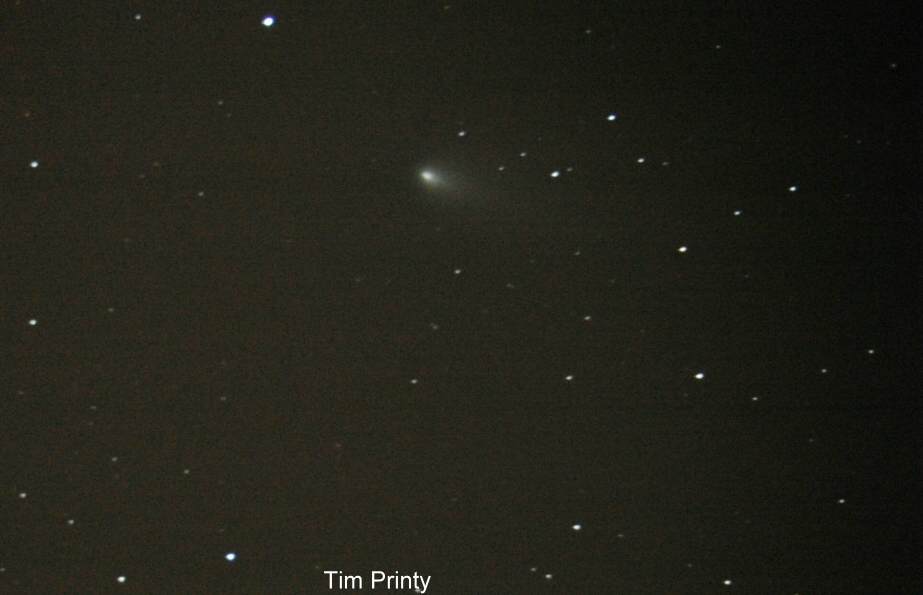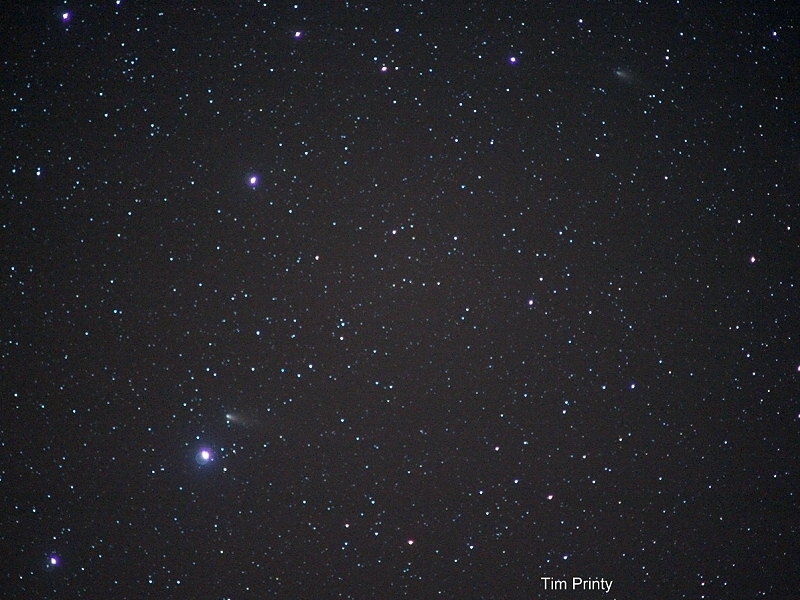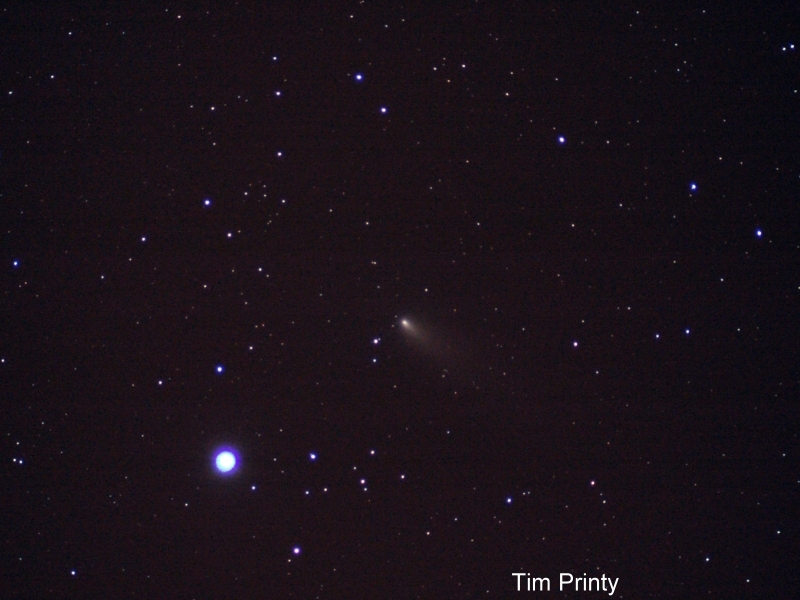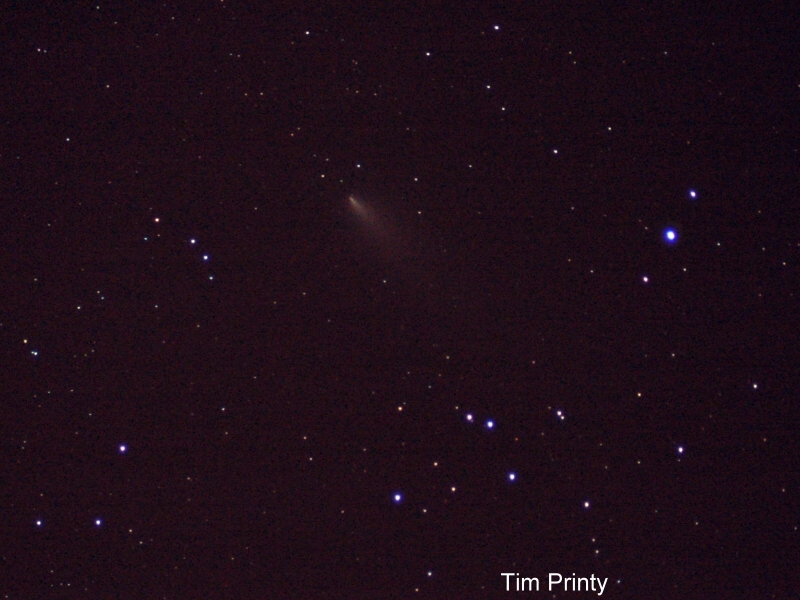Comet Schwassmann-Wachmann 3: October 1995 and May 2006
This comet was a surprise for amateur astronomers in October 1995. It suddenly flared up in an outburst and was a faint naked-eye object. I was fortunate enough to have clear skies and photograph the comet as it proceeded through the constellation of Scorpio on successive nights. I used a 200mm F2.8 lens. The comet passed by the globular cluster M62, which is visible as the brightest dot near the comet.
The comet initially split into three fragments and two of these would later split during the 1995 return to produce five fragments (Labeled A-F). During the 2001 return, fragment A seems to have disintegrated and fragment C was determined to be the brightest.
In March of 2006, more fragments were identified bringing the total up to thirteen mini-comets being in the train of comets that were headed towards their rendevous with Earth in May. Below is one of my first images of the comet on March 30, 2006 with a 10" Meade SCT @ F6.3. A Nikon D70 was used set at ISO 800 with a ten-minute exposure.

By Mid-April, some 33 fragments of the comet had been identified. I managed to get some shots of the comet's two brightest fragments (B and C) on the evening of the 20th of April as fragment C passed through Corona Borealis. This is a five-minute exposure using the Nikon D70 set at ISO 800 with a 135mm lens. Fragment C is located next to Alpha Corona Borealis and fragment B is located to the upper right of the frame.

I then used a 600mm F5 refractor with the Nikon D70 set at ISO 800. This five-minute exposure shows fragment C near Alpha Corona Borealis.

Fragment B was more interesting as the coma was more diffuse with a narrow spine trailing the comet. The same setup was used with the 600mm F5 refractor.

Unfortunately, the weather in NH went sour for the next few weeks and the comet escaped further photography. I missed a great opportunity to photograph it next to the Ring Nebula (M57) because of weather. It will be interesting how the comet appears in future apparitions or if anything returns at all.